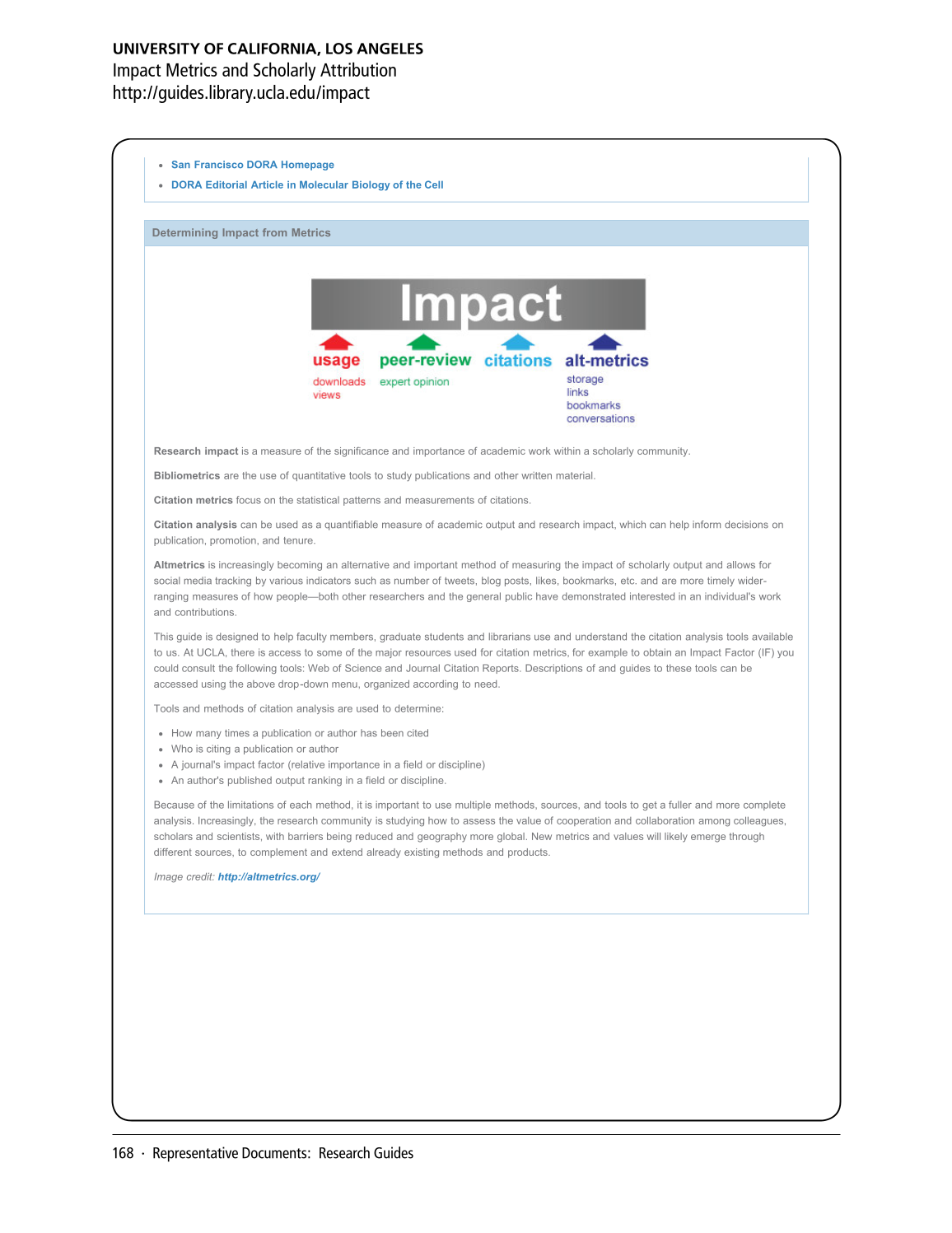168 · Representative Documents: Research Guides
UNIVERSITY OF CALIFORNIA, LOS ANGELES
Impact Metrics and Scholarly Attribution
http://guides.library.ucla.edu/impact
Home - Impact Metrics and Scholarly Attribution - Research Guides at UCLA Library
http://guides.library.ucla.edu/impact[4/24/15, 3:33:18 PM]
San Francisco DORA Homepage
DORA Editorial Article in Molecular Biology of the Cell
Determining Impact from Metrics
Research impact is a measure of the significance and importance of academic work within a scholarly community.
Bibliometrics are the use of quantitative tools to study publications and other written material.
Citation metrics focus on the statistical patterns and measurements of citations.
Citation analysis can be used as a quantifiable measure of academic output and research impact, which can help inform decisions on
publication, promotion, and tenure.
Altmetrics is increasingly becoming an alternative and important method of measuring the impact of scholarly output and allows for
social media tracking by various indicators such as number of tweets, blog posts, likes, bookmarks, etc. and are more timely wider-
ranging measures of how people—both other researchers and the general public have demonstrated interested in an individual's work
and contributions.
This guide is designed to help faculty members, graduate students and librarians use and understand the citation analysis tools available
to us. At UCLA, there is access to some of the major resources used for citation metrics, for example to obtain an Impact Factor (IF) you
could consult the following tools: Web of Science and Journal Citation Reports. Descriptions of and guides to these tools can be
accessed using the above drop-down menu, organized according to need.
Tools and methods of citation analysis are used to determine:
How many times a publication or author has been cited
Who is citing a publication or author
A journal's impact factor (relative importance in a field or discipline)
An author's published output ranking in a field or discipline.
Because of the limitations of each method, it is important to use multiple methods, sources, and tools to get a fuller and more complete
analysis. Increasingly, the research community is studying how to assess the value of cooperation and collaboration among colleagues,
scholars and scientists, with barriers being reduced and geography more global. New metrics and values will likely emerge through
different sources, to complement and extend already existing methods and products.
Image credit: http://altmetrics.org/
Librarian




























































































































































































